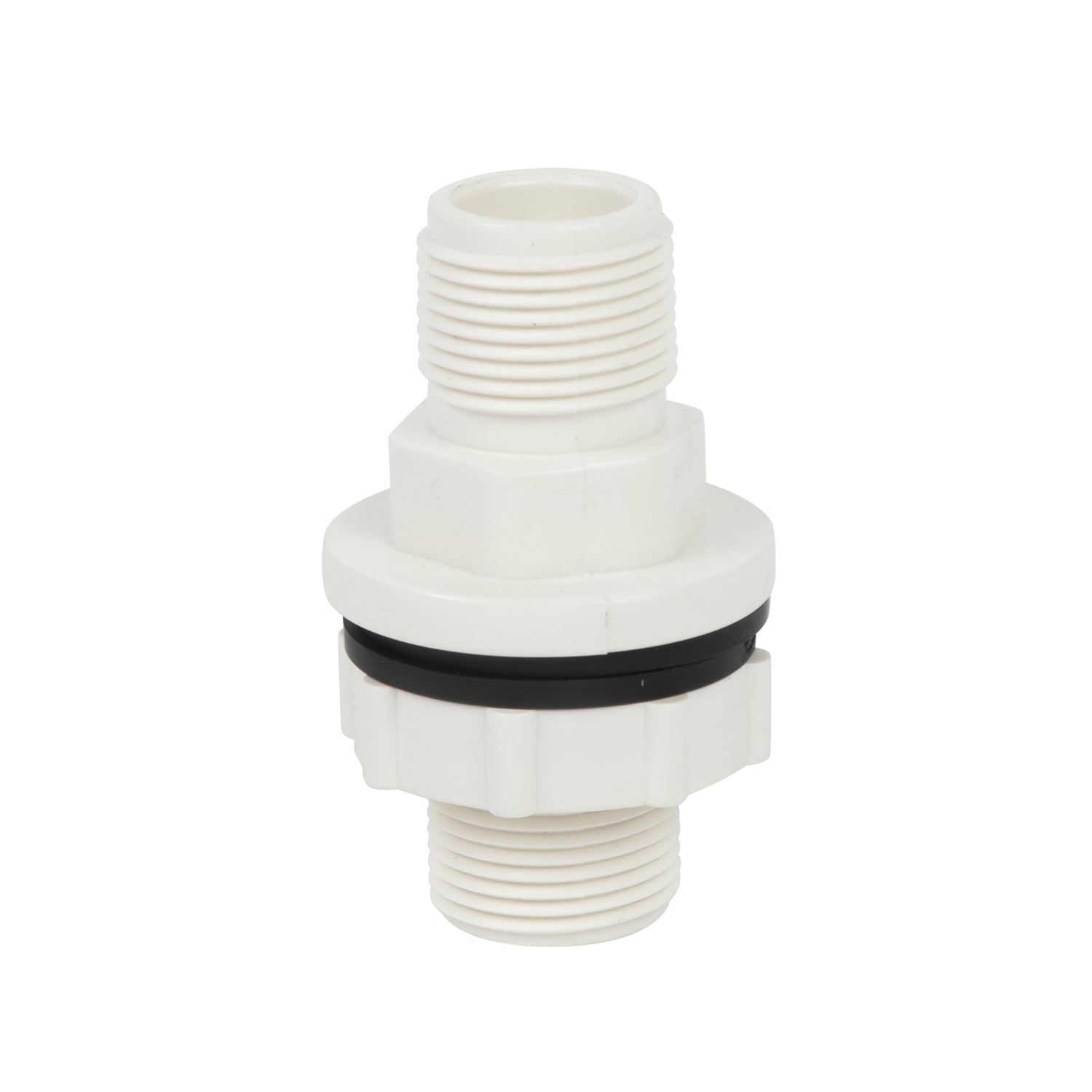


UPVC Ball Valve Specifications
Attribute | Specifications |
Size Range | 1/2" to 8" |
Standards | ASTM, DIN, JIS, BS |
Shape Options | Octagonal ball valve, Compact ball valve |
Connection Options | Threaded connection, Socket connection |
Body Material | UPVC |
Seat Seal Material | TPE |
Ball Material | PP |
Handle Material | ABS |
O-ring Seal Material | NBR |

Product Overview
Focused on precision, space-saving, and reliability, this valve is ideal for medical devices, analytical instruments, and small industrial equipment. Its miniaturized design without compromising performance makes it a top choice for applications where space is limited and flow control accuracy is critical.
Characteristic Description
Precision Materials for Miniature Performance
Body: UPVC – Lightweight and compact, with high dimensional accuracy to fit small equipment.
Seat Seal: TPE – Ultra-precise sealing to prevent micro-leakage, critical for laboratory and medical applications.
Ball: PP – Miniaturized with smooth surface finish, ensuring precise flow control in low-flow systems.
Handle: ABS – Compact and ergonomic, designed for precise operation in tight spaces.
O-ring Seal: NBR – Micro-sized for tight sealing, resistant to wear in frequent-use equipment.
Compact Sizing & Flexible Connections
Available in sizes from 1/2" to 4" (with a focus on small diameters), the valve features a compact shape that fits into miniaturized equipment. Threaded and socket connections are optimized for small pipes, ensuring secure attachment without occupying excess space.
Market Research
The global miniature valve market is expanding with the growth of medical devices, laboratory equipment, and small-scale industrial machinery. Manufacturers of these products require valves that are compact, leak-proof, and precise – all core strengths of PVC Ball Valve. Unlike larger industrial valves, this product is tailored to the needs of miniaturized systems, offering high precision without sacrificing reliability. The demand for cost-effective, disposable-friendly valves in medical and laboratory settings further drives the adoption of PVC-based solutions, as they are affordable and easy to replace.
Key Features
Micro-Leak-Proof Design
The integrated O-ring (housed in the valve body) ensures tight sealing, preventing micro-leakage that could compromise sensitive equipment or experiments. The mold-assembled components guarantee consistent precision across all units.
Space-Saving & Easy Integration
The compact shape and small size allow for seamless integration into miniaturized equipment. The detachable handle can be removed when not in use, further reducing space requirements.
Smooth Precision Operation
Even for small sizes (1/2" to 2"), the optimized design ensures light torque and smooth handle rotation. For sizes 2.5" and above (suitable for larger small-scale equipment), bidirectional opening enhances operational flexibility.
Performance Meets
The ball valve complies with ASTM, DIN, JIS, and BS standards, ensuring compatibility with global miniature equipment designs. Each unit undergoes rigorous leakage testing: high-pressure air (16pn water pressure equivalent) is injected and held for 24 hours to detect micro-leaks. The materials are non-toxic and meet medical and laboratory safety standards, making it suitable for contact with reagents, samples, and medical fluids.
Customized Service
Precision Sizing: Custom miniaturized sizes below 1/2" for specialized instruments.
Material Customization: Medical-grade materials (e.g., silicone O-rings) for biocompatibility in medical devices.
Integration Support: Design modifications to fit specific equipment interfaces or mounting requirements.
Bulk Packaging: Small-unit packaging for laboratory use or bulk packaging for equipment manufacturers.
FAQ
Is this valve suitable for laboratory reagent lines?
Yes. The non-toxic materials and micro-leak-proof design make it ideal for handling laboratory reagents and samples.
What is the minimum flow rate it can control?
The valve can reliably control flow rates as low as 0.1 L/min, making it suitable for analytical instruments and precision fluid systems.
Can it be sterilized?
It can withstand chemical sterilization (e.g., with ethanol or isopropyl alcohol). Avoid high-temperature sterilization (above 60°C) to preserve material integrity.
How to replace the O-ring in small-sized valves?
The detachable handle allows easy access to the O-ring. A small tool kit (provided with bulk orders) facilitates O-ring replacement without damaging the valve body.





